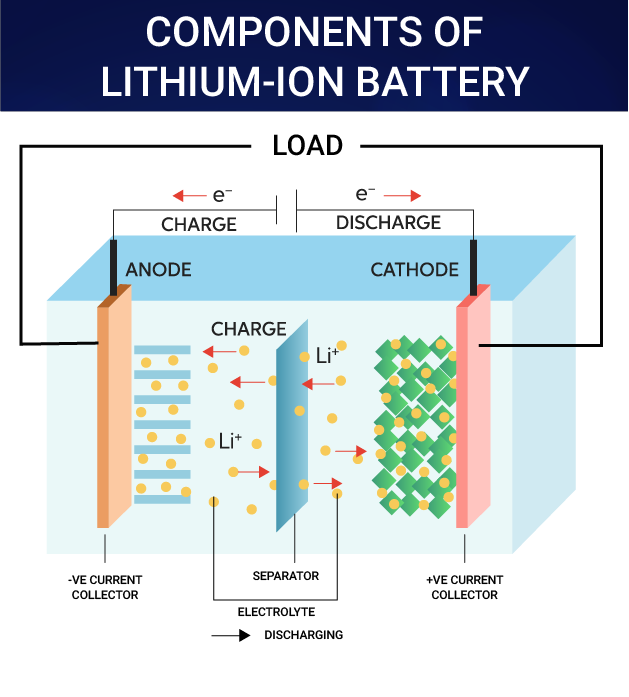Lithium ion battery is one of the most common rechargeable battery types used in consumer electronics today. With the increasing demand for consumer electronics, comes an increased need to responsibly dispose of lithium-ion batteries. As a key component in many electronic devices, such as smartphones and laptops, lithium-ion batteries can be recycled but require special handling.
This article provides a comprehensive guide on how to safely recycle your used lithium-ion battery, discussing the different methods available and what is involved in each process. Recycling your lithium-ion battery can not only be environmentally friendly, but also economical. With this guide from experts, you’ll learn the best ways to get the job done safely, ethically and efficiently.
Lithium Ion battery recycling program
The first step to recycling your lithium-ion battery is finding a certified and reliable program for doing so. Do an online search of the various programs available in your area. Contact the manufacturers themselves to see if they offer any recycling services. Make sure that the program you go with is environmentally responsible,. It is also compliant with all laws and regulations, and provides clear reporting on outcomes.
Not all lithium-ion batteries are recyclable, so take the time to properly dispose of them in accordance with local laws and regulations. The United States Environmental Protection Agency recommends avoiding burning or shredding your batteries, as this can be hazardous to yourself and the environment. Complying with local regulations is important, as improper disposal can cause explosions or the release of toxic substances into the environment.
The key to properly recycling your lithium-ion batteries is to find the correct program for your specific type of battery. Most manufacturers and retailers have their own collection and recycling programs, so it’s important to contact them directly. Many stores such as Best Buy also provide lithium-ion battery take back programs and mail-in options to help make battery disposal easier.
Additionally, you can look up local electronics recycling centers that accept lithium-ion batteries in your area. Whichever route you choose, proactively recycling your batteries ensures a safer environment for everyone.
Disassemble the Lithium Ion battery if possible
If your battery is reusable, you may be able to disassemble it before dropping it off at a recycling plant. This will help to reduce the amount of materials that need to be handled by staff once the batteries arrive at their final destination.
Be sure to wear protective gloves and eyewear while doing so. You should also ensure that all components are placed in separate containers before sending them off for recycling.
Disassembling the battery can be a relatively simple process depending on the type of lithium battery you have. Lithium-ion batteries will often require a special screwdriver to open them up, while other types such as alkaline or nickel-metal hydride may have easy access panels. Once you’ve opened up the battery, you’ll need to carefully remove the cells from their casings and make sure to label everything so it is easier for staff at the recycling plant to recognize each component.
Be sure to wear protective gloves and eyewear during this process, as there are hazardous materials present in some lithium batteries that can harm your skin and eyes if handled improperly.
You should also look for the recycling symbol on your lithium battery. This symbol indicates that the product is made from recycled materials and can be recycled again after use. Disassembling the battery is not only important to identify which kind of lithium battery you’re working with, but it will also make sure it can be safely transported to a recycling plant. Many recycling centers accept batteries in their original packaging, so as long as you have all the parts labeled correctly, then disposal should be easy and safe.
Keep charged and defective Lithium Ion batteries separated from each other
One important step in the battery recycling process is to ensure that charged and defective batteries are kept separate. This will help to prevent short-circuiting and reduce the risk of any hazardous materials from being released into the environment. When preparing your batteries for shipping, keep those which are still usable in one container and those which are dead or have malfunctioned in another.
Lithium batteries are widely used for powering everyday electronics, but when thrown away and not recycled properly, they can release toxic chemicals into the environment. Therefore, it is important to take the necessary steps to ensure that both regular and defective lithium batteries are recycled in an environmentally friendly way. Separating charged from discharged or defectively functioning lithium batteries and keeping them in separate containers is one essential step to ensure responsible disposal of these powerful energy stores.
Lithium batteries, when disposed of properly and not just carelessly thrown away, can be safely recycled without harming the environment. But that’s only possible if they are kept separate from each other. This is because a charged and non-charged lithium battery should never come into contact or it could cause dangerous chemical reactions which could lead to potential explosions.
For this reason, keeping these two types of batteries in separate containers is the best way to ensure safety when disposing them responsibly. Recycling centers won’t accept lithium batteries unless they are sorted into charged and discharged batteries, so it’s important to remember this essential step before handing them over for safe disposal.
Transport the batteries according to safety regulations.
To ensure lithium-ion batteries are transported safely, it’s important to follow the relevant transportation regulations. This means consulting the transportation regulation information published by bodies such as your national regulatory body and the International Civil Aviation Organization (ICAO). The precautions you need to take when transporting lithium-ion batteries depend on the type and amount of production you want to transport, so be sure to read up on this before shipping.
To transport lithium-ion batteries in bulk, you must ensure that the cells and batteries meet the requirements for classification, packaging, labeling and documentation as outlined in ICAO regulations. You should also pack the batteries according to safety regulations and ensure they are only charged to a maximum of 30% capacity. Additionally, use appropriate safeguards like temperature monitoring devices to guard against any potential risks during the shipping process. Following these guidelines can help your business safely and successfully transport lithium-ion batteries.
When shipping lithium-ion battery it’s important to properly package them for transportation. Make sure you use appropriate packaging such as leak-proof containers, insulated boxes. Use specially designed shipping cartons that can protect the battery from physical shock. Also you need protection from water vapor, and corrosion.
Additionally, make sure the battery is secured in its proper position within the package to protect it from any potential hazards during the shipping process. In some cases, you’ll need to use fireproof materials like fiberglass jute mats or mineral wool blankets to protect the cells and batteries during transport. Following these steps can help your business safely and efficiently ship lithium-ion battery.
Drop off or send your batteries for recycling
Once you have prepared and sealed your batteries, they are ready to be sent off for recycling. You may choose to drop them off at a participating local store or with an approved recycler. Or, if it’s more convenient, you can mail the packages using courier services like FedEx or UPS. Whichever method you choose, make sure you receive proof of delivery. This is to ensure that your lithium-ion batteries have been received by the recycler in full and intact.
Drop off or sending your batteries for recycling is the best way to ensure that these materials are disposed safely. We must make sure this happens without damaging the environment. Companies like RecycleMate offer a variety of solutions to meet your needs. All the way from providing pick-up services to assisting with container shipments. Regardless of which solution you choose, proper recycling will help you reduce the risk of fire hazards. Fire that are associated with lithium-ion batteries in the future.
Lithium-ion batteries should never be put in the trash! They have the potential to explode, catch fire and cause chemical contamination when improperly disposed of. If not properly recycled, these hazardous materials can leak into rivers and streams or escape into our airways. Recycling your lithium-ion batteries protects both you and our environment from potential harm.
How Lithium Ion Battery Charge
Lithium ion battery have become an essential part of our lives as they are used in all portable electronic devices. From smartphones to laptops, and even electric vehicles, lithium-ion batteries power them all. But have you ever wondered how these batteries charge? Well, let’s dive into the world of lithium-ion battery charging.
The process of charging a lithium-ion battery is relatively simple. When connected to a charger, the charger sends an electrical current into the battery. This current flows through the positive electrode (cathode) and negative electrode (anode). It may be causing lithium ions to move from the cathode to the anode via a separator. As these ions move across, electrons flow through an external circuit creating a flow of electricity that charges your device.
One important thing to note is that the rate at which you charge your device can affect its lifespan.
Are lithium Ion batteries safe?
Lithium-ion batteries have become ubiquitous in modern technology powering from smartphones to EV. While they provide a high-energy density and long-lasting performance, concerns over their safety have arisen. The most significant issue associated with lithium-ion batteries is the potential for thermal runaway.
Thermal runaway occurs when the battery’s internal temperature rises uncontrollably. This may causing it to release energy rapidly in the form of heat or gas. The process can cause fires, explosions, and significant damage to property and life. Lithium-ion batteries are also prone to short circuits caused by manufacturing defects or physical damage. These issues can lead to catastrophic failures sometimes.
Despite these risks, manufacturers continue to use lithium-ion batteries due to their superior performance characteristics. However, steps are being taken to mitigate these risks through better manufacturing processes. An improved safety features such as automatic shutdowns and fire suppression systems can alleviate the issue.
Final Thoughts
In conclusion, recycling lithium-ion batteries is an important part of protecting our environment and preserving resources. By following the steps outlined in this guide, you can recycle your lithium-ion batteries with confidence. The process is simple and straightforward, and the benefits are immense. Many retailers offer incentives for recycling. It’s a great way to save money while doing something good for the planet.






